Content from the Brookings Institution India Center is now archived. After seven years of an impactful partnership, as of September 11, 2020, Brookings India is now the Centre for Social and Economic Progress, an independent public policy institution based in India.
This column first appeared in The Indian Express, on July 15, 2014, and is based on a working paper titled Women in Party Politics, by the authors. The views are solely those of the authors.
Women constitute a quarter of Narendra Modi’s cabinet, even though they make up only a little over 11 per cent of the 16th Lok Sabha. This is significant, even internationally. In South America, for instance, women hold the same proportion of Cabinet positions, but the proportion of women in the lower houses of parliaments is more than double that of India, and 17 of the 18 countries have some kind of gender-based quota policy.
Going beyond token considerations of numbers and portfolios, it is worth noting that the women in Modi’s cabinet are backed by considerable leadership experience within the BJP. As such, this increased representation is in line with more systemic changes in the party and derived of an apparatus that has nurtured women leaders. Leadership positions within parties serve as valuable training grounds for women as they seek higher political office. An analysis of the role of women within the organisational set-up of various Indian political parties reveals that the BJP has a much better track record of allowing women access to such positions than other parties.
In 2006, following the recommendations of a committee led by current External Affairs Minister Sushma Swaraj — and comprising leaders such as Minority Affairs Minister Najma Heptulla and Speaker Sumitra Mahajan — the BJP amended its party constitution to provide a 33 per cent reservation for women within its organisational framework. In 2010, this was furthered by another amendment that increased the representation of women in all cadre positions.
These amendments also institutionalised the powers of the party’s internal women’s movement, the Mahila Morcha. At the national level, the president of the Mahila Morcha serves as an ex-officio member of the central election committee, which is responsible for making the final selection of candidates for legislative and parliamentary elections, and administering campaigns. This is paralleled at the state level.
The result of these amendments is that, as of April, 26 of the 77 members — or 33.7 per cent — of the BJP’s national executive are women. Women also comprise 26 per cent of the party’s national office bearers, which — though less than 33 per cent — is higher than other political parties in India.
Juxtaposed against the BJP, the representation of women in leadership positions within other political parties is meagre at best and nonexistent at worst. Within the Congress, only five of the 42 members (including special invitees) of the Congress Working Committee and six of the 57 members of the All India Congress Committee are women. Additionally, only four of the 14 members of the party’s election committee are women, and 30 of the 35 state screening committees for elections don’t have any female representation.
Paradoxically, the Congress’s constitution contains several clauses that reserve seats for women within the party organisation. Article VI-A, for instance, calls for 33 per cent of seats in different committees to be reserved for women. Several rules specify that at least 33 per cent of the positions on the executive committee and the AICC will be reserved for women.
The Congress, however, isn’t alone in defying its constitution’s impressive rules. Statistics for the Trinamool Congress (TMC) and the Aam Aadmi Party (AAP) are just as discouraging. While TMC’s constitution reserves 33 per cent of seats in different committees for women, none of the party’s 30 vice presidents, only two of eight general secretaries and one of 14 secretaries are women. Also, of its 10 “frontal organisations” in West Bengal, only one — the Trinamool Mahila Congress, predictably — is led by a woman.
The AAP — despite its attempts to distance itself from other parties and change the political discourse — is similarly culpable. Whereas the party’s constitution states that seven of 30 members in its highest executive body will be women, its 21-member national executive has only a solitary female presence. Even the CPM, persistent in censuring successive governments for their failure to pass the women’s reservation bill — has only one woman in its 12-member politburo, and only 11 women among its central committee’s 74 members.
Ultimately, the absence of women in party leadership positions reflects an apparatus that has been unable to nurture women leaders, failing to provide them the opportunity to gain political leadership experience and denying them access to decision-making processes. Over the past 15 years, while continuing to pass the buck for their collective failure to pass the women’s reservation bill, parties have abdicated their role in developing women leaders. This is particularly worrisome in the context of women’s reservations, because it suggests that our parties are woefully ill-prepared to put up skilled and experienced women, thereby validating apprehensions about tokenism and merit that accompanies the discourse on women’s political representation.
This, however, is an opportune moment for change. Women’s security and socio-economic concerns have never been as much in the forefront as today. Female voter turnout increased by nearly 10 percentage points in the 2014 elections. Now, as political parties, after facing setbacks in the 2014 elections, ameliorate party structures, they must use this opportunity to accord women’s representation its due importance. At the very least, they must ensure they meet the stated goals in their own constitutions. The Election Commission must play a more proactive role in holding them accountable.
The BJP, too, must address some lacunae. For instance, in the party’s various working groups, women are largely relegated to the Mahila Morcha, finding no representation on the economic, agriculture, security and legal groups, and only marginal representation in others. The BJP should also seek to translate the strides in the representation of women in party leadership positions to its candidates’ list, only 9 per cent of which, in these elections, were filled by women.
Finally, there is onus on the women cabinet ministers to draw from their leadership experiences within the BJP as they seek to fulfil their ministerial obligations. In doing so, they must rise beyond the symbolism that their presence in the cabinet evokes, and use their power and influence to expand the discourse on women’s representation and rights.
Image Source: MEAphotogallery
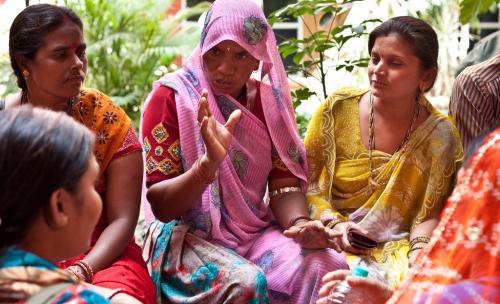
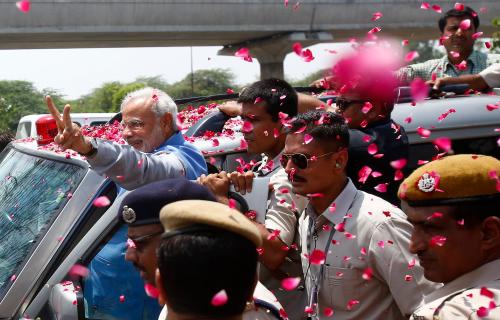
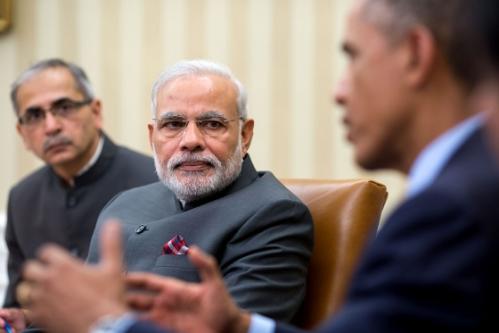

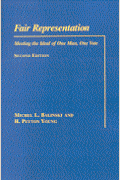
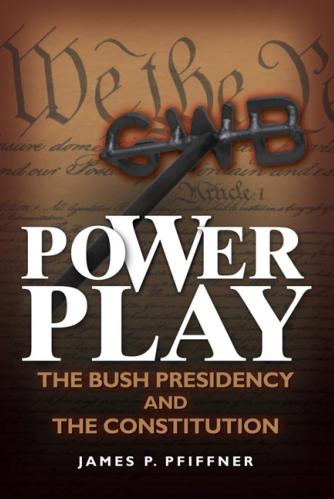
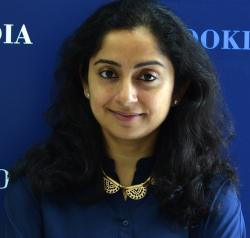



Commentary
Op-edMissing women leaders
The Indian Express
July 15, 2014